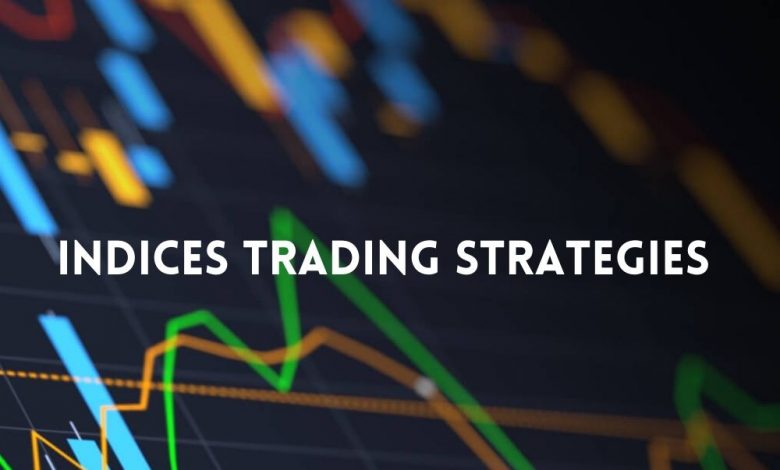Indices Trading Strategies

Introduction
Day trading is a method of buying and selling indexes on the same day, as the name suggests. The concept of day trading is to close all open positions before the market closes. What is the advantage? To minimize any additional costs or risks associated with maintaining a position overnight. Day trading’s goal is to benefit fast but modestly from even tiny price fluctuations.
Keep in mind, however, that this rule only applies to traders who have the time to consistently monitor the markets. The main disadvantage, predictably, is that day trading takes a long time. Traders must keep a close eye on the markets and be ready to respond fast if and when a price swings in a particular direction.
Staying current with current events can help you better understand why a price has moved and even predict the short-term direction of an index, allowing you to make more informed decisions when buying or selling an index.
Corporations’ Financial Statements
Due to the prominence of some significant individual stocks on an index, index prices can be highly volatile around earnings releases and important announcements, especially if the data beat or fall short of expectations.
Take the Dow Jones Industrial Average, for example, Apple is the Dow Jones Index’s second-largest component, and its performance has a significant impact on the index. If Apple’s statement exceeds market expectations, not only will the company’s stock price climb, but so will the Dow Jones Index as a whole. It’s the same with a bad news announcement.
The value of the company’s stock would almost certainly drop, bringing the Dow Jones down with it.
Trading Indices with a Breakout Strategy
Breakout trading is used by active index investors to enter a trend when it is still in its early stages. In general, this strategy can be utilized to initiate large price moves and volatility expansions, and it has a low negative risk when properly controlled.
When price moves outside of a specified support or resistance level as volume rises, this is known as a breakout. A support level is where the price of a stock tends to rebound after falling, whereas a resistance level is where the price tends to rebound to the downside after rising.
A breakout trader will start a long position on the index when the price breaks through the barrier, whereas a breakout trader will start a short position after the price breaks through support. The index becomes more volatile when one of these barriers is broken, and prices usually trend in the direction of the breakout.
Indices Trading Technical Indicators
Technical index trading comprises looking at charts and making decisions based on patterns and indicators. On a chart, these patterns are unique shapes generated by candlesticks that can help you predict where the price will move next.
Indicators are classified into four groups:
The trend indicators on the market indicate to you which way the market is moving.
Because they move in a wave-like manner between high and low levels, they’re called oscillators. Some of the trend indicators are the Parabolic SAR, Simple Moving Average, Exponential Moving Average, Fibonacci Retracement, The Bollinger Bands, and Moving Average Convergence Divergence
Momentum indicators show the strength of a trend and can also identify whether a short-term reversal is probable. The market’s fading momentum signals that it is becoming weary and that a correction or reversal is imminent. The existence of accelerating momentum suggests a strong and likely to continue the trend.
The momentum indicator generates three essential trading signals:
The 100 Line Cross, the Momentum Crossover, and the Divergence signal.
Volume indicators illustrate the quantity of trading in a certain index as well as how it has changed over time. This is useful since volume levels can predict the strength of the next move when the price changes.
Bullish swings with a high volume are more likely to be sustained than bullish moves with a low volume. This class includes On-Balance-Volume, Chaikin Money Flow, Acceleration Bands, Market Facilitation Index, and Klinger Volume Oscillator.
Volatility indicators show how much a price changes over a given time period.
As we all know, volatility is an important part of the market; without it, there would be no gains. The faster the index’s price moves, the higher the volatility, which means more profit potential. Keep in mind, however, that volatility only indicates the price range, not the future direction.
Indices for Position Trading
Position trading is the practice of purchasing and holding an index for a longer period of time. This could endure for a few days, weeks, or months. As a result, a position trader is less concerned with short-term market fluctuations. Although position traders make fewer deals than day traders, each trade has a bigger profit potential.
On the other hand, owning a stake for a long time can increase the inherent risk. Before or after a key event, such as the release of the NFP report or the start of earnings season, position traders can purchase or sell an index.
Indices of Trend Trading
Day traders and trend traders both strive to profit from short- to medium-term market trends that affect the index. The sole decision traders must make is whether to take a bullish or bearish position based on the general market sentiment. When trading the trend, keep your position open as long as the trend continues.
Conclusion
So, what is the best trading approach when it comes to trading indices? The answer is that there is no conclusive answer to that issue. Simply said, the optimum plan is one that best suits your availability, preferences, and personality.
As a result, in order to find the best trading strategy for them, each trader requires a trading routine. Whether you’re day trading, utilizing a breakout strategy, or using technical indicators, remember that specifying trade entries and following sound risk management methods will help you make more money trading indices.





